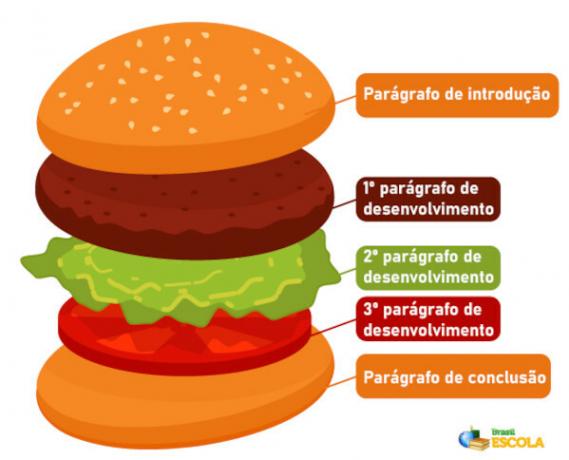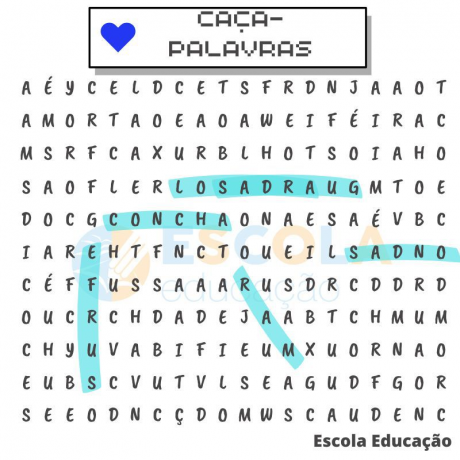O paragraph is a textual element with a unity of meaning that serves to divide and organize the text. To identify it, just look for the sections that start with an indent on the left margin and end with a full stop. They can be divided into introductory, development and conclusion paragraphs. All are structured in order: phrasal topic, development and conclusion.
Read too: 5 paragraph tips
How to identify a paragraph of text?
the paragraph starts with a margin in the left corner of the page, in its first line, indicating the beginning, and if ends with a period, after which there is no more text, except on the back line with the indented margin, indicating the beginning of a new paragraph. Thus, all parts of the text structured in the following way can be considered a paragraph.
Semantically, the paragraph is a inner text unit. Thus, it is appropriate for every paragraph to be organized around an approach, a perspective, an analysis or even a specific scene of the general subject. It must have content with a minimally independent meaning that solidifies or expands in relation to the other paragraphs of the text.
Step by step how to make a paragraph
To make a good paragraph, it is necessary to structure it properly, allowing the meaning to be constructed in a fluid and clear way. So, to make a good paragraph, it is necessary to present:
Insert the phrasal topic: the author must start with the phrasal topic, the first sentence of the paragraph, which must present a synthesis of the main idea of this excerpt.
deepen the subject: after presenting a summary sentence of what will be covered in the paragraph, deepen this information, adding details, arguments, data, explanations or any other element that is relevant to the textual genre in question.
complete the idea: it will not always be mandatory to complete the thoughts in the paragraph, but whenever necessary, add, at the end, an excerpt that explains the final conclusions and reflections about what was approached in it.
Examples of paragraphs
Paragraphs can have different structures that are shaped through the relationship with the textual genre. Check out some sample paragraphs.
Example 1:
“A dissertation is a textual type that serves to present information about a topic and defend a point of view about the subject. This typology is structured into an introduction, development and conclusion, organized so as to validate the author's point of view and convince the reader. Therefore, this typology is relevant to the critical exercise of analysis and reflection as well as argumentation.”
In example 1, the paragraph presents information about the text type dissertation. Based on this example, we can highlight:
Phrase topic: "A dissertation is a textual type that serves to present information about a topic and defend a point of view about it."
Development: "This typology is structured in introduction, development and conclusion, organized in order to validate the author's point of view and convince the reader."
Conclusion: "Thus, this typology is relevant to the critical exercise of analysis and reflection as well as argumentation."
Example 2:
“Once upon a time there was a very smart girl who lived with her little mother in the enchanted forest. This forest was composed of magical animals, fairies and even goblins that made that place a real enchanted adventure. Together, mother and daughter lived happy and prosperous.”
Example 2 presents a paragraph of narrative text. It is a fairy tale, and it is possible to identify linguistic differences in relation to example 1. However, it is still possible to split the paragraph in the default structure:
Phrase topic: "Once upon a time there was a very smart girl who lived with her little mother in the enchanted forest."
Development: "This forest was composed of magical animals, fairies and even goblins that made that place a real enchanted adventure."
Conclusion: "Together, mother and daughter lived happy and prosperous."
See too: How to write a 10 grade essay?
Paragraph structure and characteristics
The paragraph starts with a margin shift to the left of the page and ends with a period. He can consist of a single period or more. Each paragraph presents a specific focus on the theme, therefore, in the text, the relationship between the paragraphs allows for a broader knowledge. Structurally, the paragraph is divided into:
Topicphrase: is the phrase that presents the main idea of the paragraph, concisely and clearly elaborated. It should indicate to the reader the central message that will be addressed, contributing to the total understanding of the text.
Development: is the middle part of the paragraph. It follows up on the phrasal topic, adding information and ideas to deepen the theme.
Conclusion: is the final part of the paragraph and serves to present an outcome or a conclusion about what was previously discussed.
Types of paragraphs

Paragraphs can be classified based on their function in textual structure.. In this way, you can divide them into the following types:
Introduction: paragraph at the beginning of the text. The introduction can correspond to one or more paragraphs, as long as they are positioned at the beginning and present the information to contextualize the subject.
Development: paragraphs found in the middle of the text. These are the intermediate paragraphs. They serve to deepen, expand, or detail the subject of the text. Commonly, the development paragraphs have the greatest number, as their function is the greatest length.
Conclusion: are the last paragraphs of the text. They are responsible for resuming what was said, in a concise and summarized way, presenting the conclusions, conclusions or final criticisms. The conclusion can be longer, if there are many points to be resumed, or presented in a paragraph, when the content is shorter and requires less space.
solved exercises
Read the fragment below and answer the following questions:
“The paragraph is a unit of meaning internal to the text. It is responsible for dividing and organizing the text, separating the content into blocks. Blocks or paragraphs present different approaches to the theme, contributing to a broad construction rich in perspectives. Good division and organization of paragraphs is essential to facilitate the reader's understanding. Therefore, it is essential that all textual production consider the relevance of the paragraph and pay attention to its characteristics and structure.”
Question 1 - The fragment "The blocks or paragraphs present different approaches to the theme, contributing to a broad construction rich in perspectives." is inserted in which part of the paragraph?
A) Phrase topic
B) Development
C) Conclusion
D) Introduction
Resolution
Alternative B. The fragment presents a deepening of the theme of the paragraph.
Question 2 - Which of the fragments below corresponds to the phrasal topic?
A) "Proper division and organization of paragraphs is essential to facilitate the reader's understanding."
B) "The blocks or paragraphs present different approaches to the theme, contributing to a broad construction rich in perspectives."
C) “The paragraph is a unit of meaning internal to the text. He is responsible for dividing and organizing the text, separating the content into blocks.”
D) "Therefore, it is essential that all textual production consider the relevance of the paragraph and pay attention to its characteristics and structure."
Resolution
Alternative C. The phrasal topic is always the first sentence of the paragraph, it presents the topic that will be covered in the paragraph.
Question 3 - Which of the following alternatives corresponds to development?
A) “The paragraph is a unit of meaning internal to the text. He is responsible for dividing and organizing the text, separating the content into blocks.”
B) "The blocks or paragraphs present different approaches to the theme, contributing to a broad construction rich in perspectives."
C) “He is responsible for dividing and organizing the text, separating the content into blocks. Blocks or paragraphs present different approaches to the theme, contributing to a broad construction rich in perspectives. Good division and organization of paragraphs is essential to facilitate the reader's understanding.”
D) "He is responsible for dividing and organizing the text, separating the content into blocks."
E) "Therefore, it is essential that all textual production consider the relevance of the paragraph and pay attention to its characteristics and structure."
Resolution
Alternative C. The development, in this paragraph, contains three sentences, they deepen the subject and add different information.
Question 4 - Considering the semantic content of the previous paragraph, in which typology does it fit?
A) Development
B) Conclusion
C) Introduction
D) Closing
Resolution
Alternative C. The paragraph presents initial information about the “paragraph”, such as the presentation of its definition and its function in the text, characteristics common to the introduction.
By Talliandre Matos
Writing Teacher


